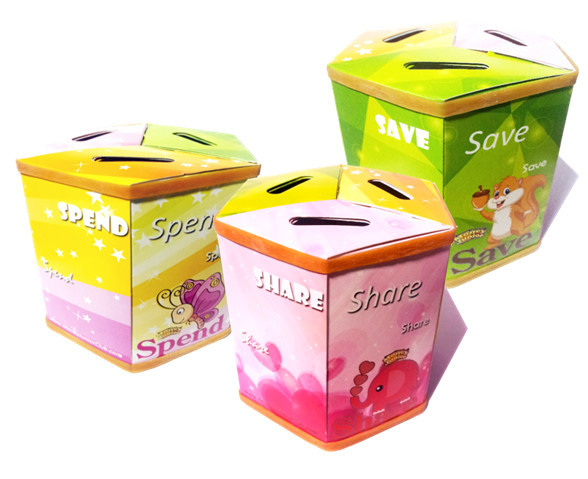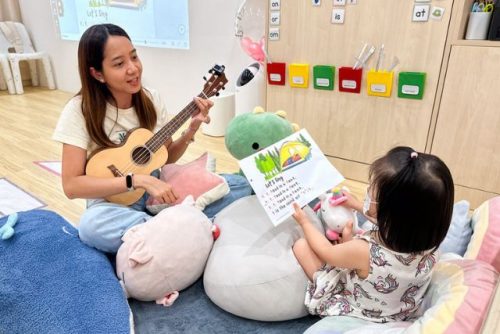Missed our Parenting with Love Seminar? Here are the key takeaways from our Parenting with Love: Preparing Your Child For Primary School Seminar, held on 25 April at SMU Mochtar Riady Auditorium.
Getting Your Kids Started On Money Mangement
Save or spend? Which should you teach your child first? How can we discuss money issues with our children in fun and age appropriate ways?
Ernest Tan, Certified Financial Planner, Master Money Coach, Author of Raising Financially Savvy Kids shares his expertise and real life tested money management techniques on how to teach kids to be financially smart.

1. When should you start to talk to kids about money?
Ernest mentioned that parents can start to talk to their kids about money when they are as young as 3 years old. At age 3 – 4 years of age, children are able to start grasping the concept of money. At this stage, parents need to be pro-active and make the learning FUN. Children learn more when they can visualise. That is why Ernest developed the concept of money jars – the savings jar, sharing jar and spending jar.
For children aged 5 – 10 years, Ernest suggested that the teaching can be more complex. This is the age where most children will receive their allowance as they go to Primary school. It is also the best time to teach them how to manage their money with their allowance.
2. How much should you give to your child?
There is no definite amount. A few things you may want to consider are your child’s age, family income, where you live and what is the amount needed to cover your child’s day to day activities.
General Rule of Thumb. Increase your child’s allowance by $0.30 every year. For example, if your 7 year-old gets $2.00, when he turns twelve, he would be getting around $3.50.
3. The Three Money Jars

i) Savings Jar
Encourage savings by setting goals. Have your child set a goal (i.e. to buy a toy) for something that is not too pricey as it may get frustrating for your child if they can’t afford it for months. Every time your child adds money to the savings jar, help them count up how much they have, talk with them about how much they need to reach their goal, and when will they roughly reach their targeted goal.
Spend before saving or save before spending? Ernest recommended the latter and showed a diagram to prove that even when two people shared the same amount, the person who saved first, in the first 10 years of his life had more savings as compared to the person who saved later in his life.
ii) Spending Jar
It’s important for you to sit down with your child and talk about the difference between a need and a want. This will help them in their decisions on what to spend on. For example, is buying a set of erasers from the bookshop a need or a want? How much do your children need to spend a day on food?
Include your child in financial decisions. Give your child an idea of the thought process of making financial decisions as a grown-up by talking aloud and asking questions such as “Is this something we really, really need? Is this cheaper if we buy it from NTUC?” Explain to your child the reason why you decided to choose to buy a Marigold fruit juice instead of an imported Italian brand fruit juice. “It costs $5 less and it tastes the same to me.”
Tip from Ernest: Bring them along with you to a supermarket when you go for grocery shopping, give them $2 and let them decide what items to buy. Are those items needs or wants?
iii) Sharing Jar
Giving back is often neglected. But Ernest believes this is an equally important habit to instill in children. According to developmental psychologist Marilyn Price Mitchell, children who perform acts of kindness experience increased well-being, popularity and acceptance among peers. This leads to better classroom behaviour and higher academic achievement.
Tip from Ernest: It is best to give your kid’s allowance in loose change, so that they do not have an excuse to not distribute their money into the jars. For example, if their allowance is $2 per day, give them in denominations (e.g. $1, 50 cents, 20 cents, 10 cents, 10 cents) so they can start to put their money in the jars immediately after receiving their allowance.

In summary
- All you need is a little patience and ingenuity! Children can be easily encouraged to save money
- It’s not always easy but with consistency, the rewards are immeasurable
- You will be giving children skills that will benefit them for the rest of their lives
- Use smart and fun methods to teach children money lessons
- Teaching children about money can be an exciting and fun-filled experience
For more information on Ernest’s money workshops for adults and children, go to jopezacademy.com or get a copy of his book, Raising Financially Savvy Kids.
* * * * *
Like what you see here? Get parenting tips and stories straight to your inbox! Join our mailing list here.
Want to be heard 👂 and seen 👀 by over 100,000 parents in Singapore? We can help! Leave your contact here and we’ll be in touch.




























































Leave a Comment: